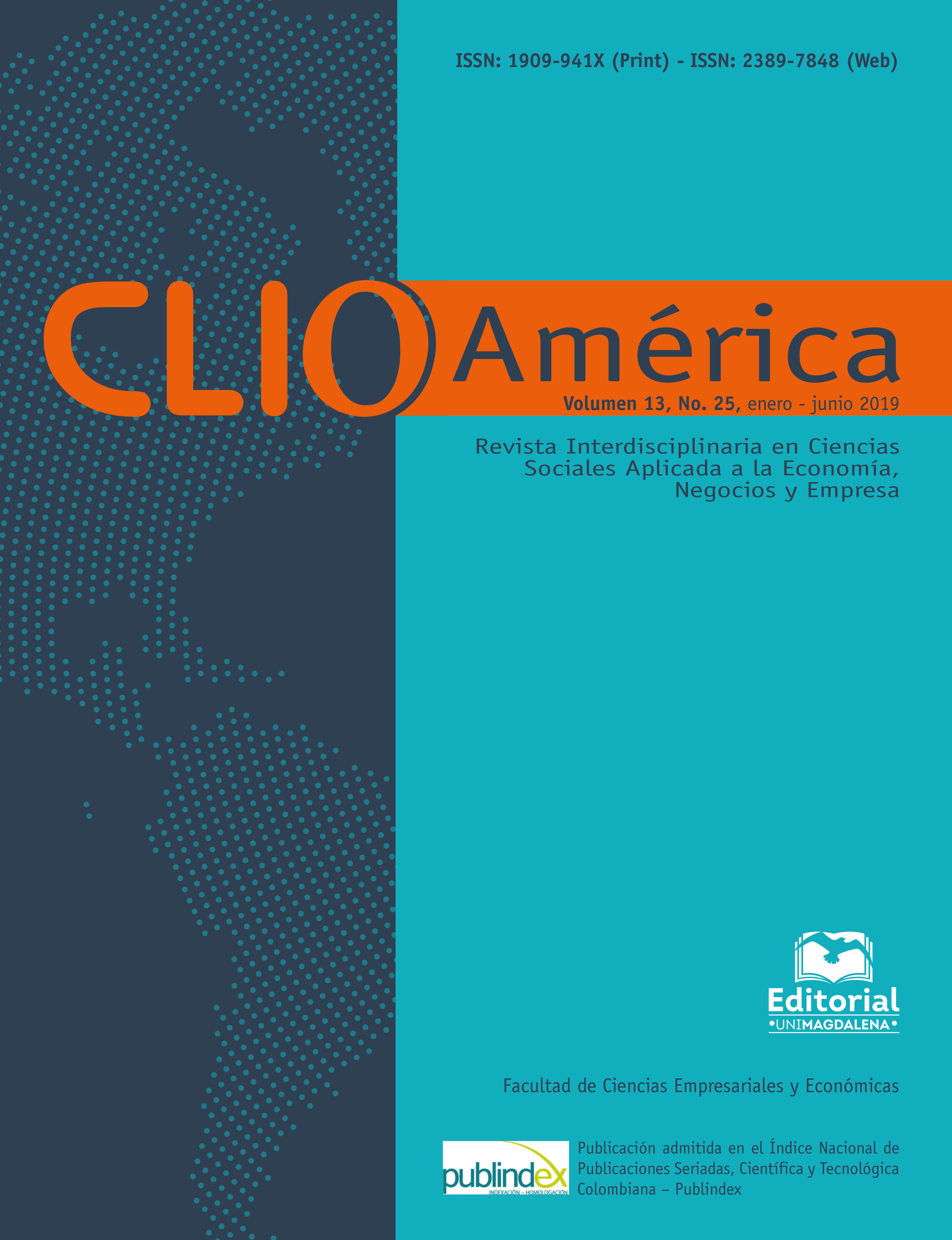Abstract
The Colombian Stock Market is managed by the Colombian Stock Exchange, which evaluates the behavior of the market through financial indicators, among which is the COLCAP index, that measures the movement of the price of the most liquid shares in the Colombian market. This indicator is updated quarterly, both in the actions that comprise it and in the corresponding participation of each of them, so it is important to compare the variation of said index from one quarter to another, and thus determine if there is significant evidence in the difference between the quarterly variations of the index. In order to carry out this study, information is taken from the index in the period from the first (01) of February 2012 to the thirty-one (31) of January 2017 and the data is analyzed using the simple variance analysis model or a Only factor starting from the initial hypothesis that the variation of period 1 is equal to the remaining periods (2, 3 and 4), showing in the results that there is not enough statistical evidence to reject this hypothesis.References
Acevedo, N., Jiménez, L. y Castaño, N. (2017). Relación de causalidad de variables macroeconómicas locales y globales sobre el índice COLCAP. Revista ESPACIOS, 38(21), 38. https://www.revistaespacios.com/a17v38n21/a17v38n21p38.pdf
Abugri, B. A. (2008). Empirical relationship between macroeconomic volatility and stock returns: Evidence from Latin American markets. International Review of Financial Analysis, 17(2), 396–410. http://doi.org/10.1016/j.irfa.2006.09.002
Banco de la República. (2017). Índices del mercado bursátil colombiano. http://www.banrep.gov.co/es/igbc
Bolsa de Valores de Colombia – BVC. (2013). Metodología para el cálculo del índice COLCAP. BVC. www.bvc.com.co
Bolsa de Valores de Colombia – BVC. (2016). Precios de cierre del COLCAP. BVC. www.bvc.com.co
Carmona, M. D. y Vera, L. M. (2015). Evaluación de factores de riesgo con influencia en los retornos de los activos de la canasta COLCAP en COLOMBIA, 2009-2012. Revista Dimensión Empresarial, 13(1), 21-40. https://doi.org/10.15665/rde.v13i1.336
Espinosa, O. y Vaca, P. (2017). Ajuste de modelos GARCH Clásico y Bayesiano con innovaciones t-Student para el índice COLCAP. Economía del Caribe, (19), 1-32. http://rcientificas.uninorte.edu.co/index.php/economia/article/view/8343
Fama, E. (1970). Efficient Capital Markets: A Review of Theory and Empirical Work. The Journal of Finance, 25(2), 383-417. https://www.jstor.org/stable/2325486?seq=1#metadata_info_tab_contents
León, R. C. (2009). Una aproximación teórica a la superficie de volatilidad en el mercado colombiano a través del modelo de difusión con saltos. Borradores de Economía, (570), 1-31. 10.2139/ssrn.2101207
León, C. S. y Trespalacios, C. A. (2015). Factores macroeconómicos que influyen en la volatilidad del índice accionario COLCAP (tesis de maestría). Universidad EAFIT, Colombia. http://hdl.handle.net/10784/7749
Montenegro, A. (2007). Efecto día en la bolsa de valores de Colombia (No. 004447). Pontificia Universidad Javeriana. https://ideas.repec.org/p/col/000108/004447.html
Montgomery, D. (2004). Diseño y Análisis de Experimentos (Segunda Edición ed.). México D.F., México: Limusa. Diseno_y_analisis_de_experimentos_Dougla.pdf
Ojeda, E. C. y Castaño, V. E. (2014). Prueba de eficiencia débil en el mercado accionario colombiano. Semestre Económico, 17(35), 13-42. https://doi.org/10.22395/seec.v17n35a1
Ortiz, S. J., Peña, C. D. y Espitia, C. H. (2016). El efecto día en los retornos del índice COLCAP analizado con mapas auto organizados. Ciencia e Ingeniería Neogranadina, 26(1), 97-108. https://doi.org/10.18359/rcin.1665
Parra, B. A. (2016). Tasa Representativa del Mercado y WTI: Determinantes en las variaciones del índice COLCAP entre 2010 y 2015. Revista FACCEA 6(2), 146-153. http://www.udla.edu.co/revistas/index.php/faccea/article/view/588
Pérez,V. J. y Mendoza, G. J. (2010). Efecto día en el mercado accionario colombiano: una aproximación no paramétrica. Borradores de Economía (585), 1-18.
http://repositorio.banrep.gov.co/handle/20.500.12134/5602
Pinilla, S. R., Valero, R. L. A. y Guzmán, V. A. (2007). Operaciones financieras en el mercado de capitales. Bogotá, Colombia: Correval.
Rivera, P. D. (2009). Modelación del Efecto Día de la Semana para los Índices Accionarios de Colombia mediante un Modelo STAR GARCH. Revista de Economía del Rosario, 12(1), 1-24. https://revistas.urosario.edu.co/index.php/economia/article/view/1132
Suárez, O. (2018). Compañías del COLCAP suavizan el pago de sus dividendos. Bogotá: Colegio de Estudios Superiores de Administración-CESA.
Tsay, R. (2005). Analysis of financial time series (2a ed.). New Jersey: John Wiley & Sons. https://cpb-us-w2.wpmucdn.com/blog.nus.edu.sg/dist/0/6796/files/2017/03/analysis-of-financial-time-series-copy-2ffgm3v.pdf

This work is licensed under a Creative Commons Attribution-NonCommercial-ShareAlike 4.0 International License.


